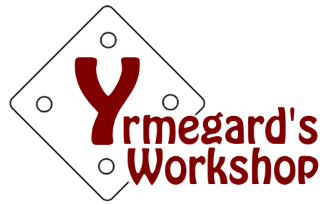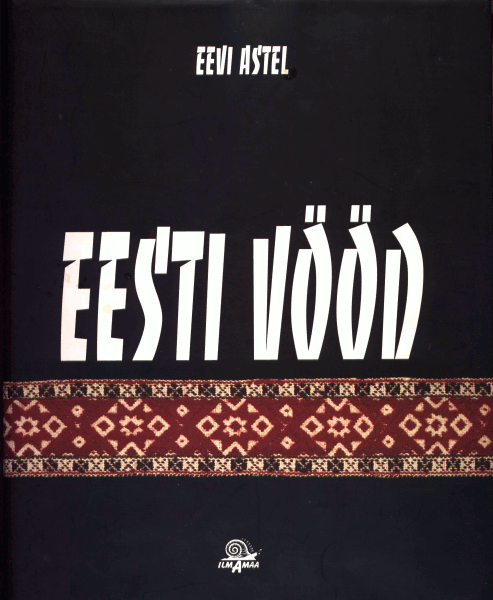Ilmamaa, 1998
ISBN 9985-821-49-1
Who could have known that this book would immediately become a bestseller? It was written and published, like many similar publications, with the financial support of several cultural funds, and was intended for those interested in the history of Estonian national costume, as well as for collectors – to be added to the bookshelf with other colourful albums. It sold out quickly, was reprinted and sold out again, and again – for decades now, new batches had to be printed every once in a while. Locals and tourists alike, children and adults, those interested in textiles and history, and simply people admiring traditional crafts have bought it for themselves or as a gift. This same book had it’s place on Peter Collingwood‘s bookshelf
Eevi Astel is an ethnographer who worked at the Estonian National Museum from 1963 until her retirement in 2008. From 1971, she was the chief curator of the museum’s collections. It is the National Museum that holds the largest collection of material objects representing the richness of Estonian national culture, from household items to photographs, from hand-crafted items to films. It is absolutely impossible to be surrounded by these treasures and remain indifferent to those. Eevi is a passionate, inspired and inspiring person. During her years at the museum, she wrote and helped write many articles, mainly on ethnographic textiles, textile crafts, and the history of the museum. The book on Estonian belts is the largest publication of them all.
To be fair, this publication is rather an album than a classic (text)book. Of 263 pages, the last 20 are appendices: a short summary in English and German, a bibliography, abbreviations, a list of illustrations. Add to it a total of about 20 pages of text in Estonian. The rest is filled with photos, large, colourful, high quality. Photographer Aldo Luud did the impossible in the case of some items – you can actually see the structure and the colors of the belts while the actual textiles are rather faded. The photo of the fragments of the Virunuka find is beyond praise – you can count the threads from it, while the fragments themselves are very small and different colors are almost indistinguishable.
The belts included in the album are divided into 8 (!) groups according to materials and techniques used. But first, the foreword tells a story of the Estonian national tradition of making and wearing belts, illustrated with maps of Estonia showing geographical areas where certain types of belts were most common, as well as numerous historical photographs of people in national costumes, both posing and doing crafts (mainly tablet weaving or pick-up weaving). There are also several photographs of beautifully crafted beaters (“belt swords” in Estonian) and rigid heddles.
The first section of the album, and definitely not the longest one, is dedicated to tablet woven belts. The short text provides an overview of finds in Estonia (far from complete by now), some terminology in different Estonian dialects, as well as a general history of technology. Unfortunately, the last part needs to be taken with a pinch of salt, since even such a brief overview includes theories that have since been refuted, or are looked at from a slightly different angle. Of the few archaeological finds, only two are presented in the photos: fragments of belts from Parisselja and Virunuka. There’s also a good photo of the Virunuka reconstruction by a Finnish researcher Barbro Gardberg. Following are the photos of 58 belts dated to the 18th century or later. The photos are arranged geographically rather than chronologically, many patterns are repeated in different colors and with minor variations, for example, one type of pattern is presented more than 10 times. At the same time, many pattern types are not shown at all. However, the typology of Estonian belt patterns is yet to be studied and created, so no surprise there. Nevertheless, the photographs give a good general idea of tablet woven belts common in this region in the last three centuries.
The largest section of the album is dedicated to pick-up weaving that is by far the most common in Estonian national tradition (and costume), belts of this type form the largest variety in collections of both the National Museum and other museums. These belts are the most studied, as evidenced by rather detailed text describing the history, technology, patterns and color schemes. In total, there are photographs of 413 (!) different pick-up belts on 90 pages, most of the photographs are large enough to easily count the threads and read the pattern.
Other sections of the album showcase belts woven using the sprang technique, also belts woven on a weaving loom, a small section is looking into techniques not quite common for Estonian woven belts, such as bottle weaving, crochet and embroidery. There’s also a section on leather belts with quite a few pictures of buckles and tails. The last sections are devoted to “urban” belts (made of fabric, embroidered with beads), as well as braiding.
The downside of the album is lack of technical information, as in techniques’ descriptions and proper dates per each object, but this is indeed an album, and it does an excellent job of presenting visually a significant part of Estonian national textile tradition. For a person who’s already familiar with the presented techniques, the album is a treasure trove to draw ideas and inspiration from. And just to enjoy the bright colours.


